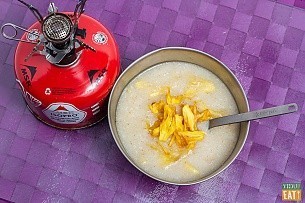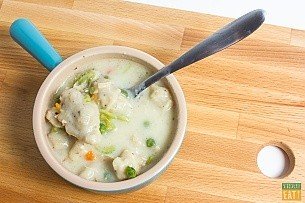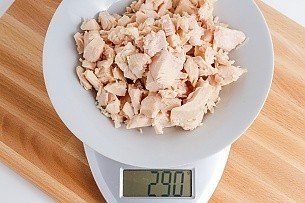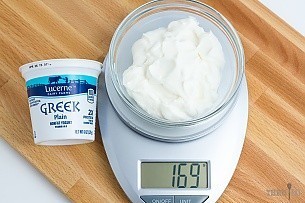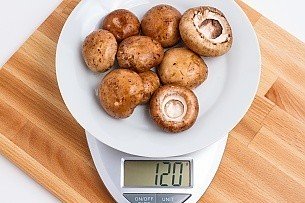
Never has a face off been this exciting! This is the Super Bowl of cream, the World Cup of dairy, the Indy 500 of moo juice; where one brand will reign supreme as the champion of powdered milk!
Okay, so it’s not quite that exciting, but it should put to rest the nagging question, “what’s the best powdered milk?”
In a previous post we compared three different options for powdered milk: Carnation, Peak, and DIY (dry-it-yourself). Based on taste and logistical reasons Peak was the winner in both categories. If you’ve never heard of Peak it’s likely for good reason, it’s produced in the Netherlands by FrieslandCampina, a Dutch dairy co-op that sells consumer products to many European countries, Asia, and Africa. So it doesn’t exactly have a very strong hold of the American market, but to be fair, there doesn’t appear to be a large demand for powdered milk in the states.
There’s another contender so popular it’s consumed almost worldwide with a much larger brand recognition—Nido. Maybe the wide popularity of Nido is because it’s produced by Nestle, a corporate name so pervasive that one associates it with taste, affordability, and chocolate. They produce everything from baby food to dog food, and with the slogan “Good Food, Good Life” surely they must make a half decent powdered milk.
If you’ve also never heard of Nido you’re probably not alone. Its popularity, and that of powdered milk in general, in the United States is borderline non-existent in mainstream markets. You can occasionally find Nido in the Hispanic food aisle at your local grocery store, but I have yet to see it in major grocery chains. However, head to a bodega in a town near you and it’ll likely be stocked in multiple sizes; you may even see a version targeted for children ages 1 and up.
So how does the Dutch Peak compare to powerhouse Nestle’s Nido?


At first glance they look very similar, in fact, I started questioning which was which and wondered if I might have accidentally switched the two. On the left is the Nido, and Peak on the right. They both have the same off white shade of color, very similar granule size, and they smell identical. Upon further inspection there was one visual cue that let me differentiate the two. The Nido was much clumpier, which struck me as odd since it was opened no more than 5 minutes prior to the photo. It couldn’t possibly have absorbed moisture from the air since it was so new, while the Peak was opened months ago.

Both Peak and Nido rehydrated to the same exact color and consistency. However, the Nido clumped significantly and had to be stirred vigorously while Peak dissolved pretty much on its own with a gentle stir. This seems to be pretty consistent with reviews I’ve read online; many people complain that Nido does not dissolve well in hot water while Peak does. This appears to be the case with room temperature water as well.

More evidence of Nido’s difficulty in dissolving is apparent at the bottom of the Nido glass, the left one, has a yellow tint while the Peak is still milky white. The taste test was very difficult, and I actually had to make a second batch to verify that my mouth wasn't playing tricks on my brain.
And the winner is…?

NIDO!
The truth is, I went into this with a bias and was expecting Peak to win from all the reviews I’ve read but I was more than pleasantly surprised by Nido.
I determined the winner primarily on taste, but I realize a lot people have different preferences and the taste of milk might vary from region to region and country to country. For me, Nido tastes almost exactly like the whole milk I’ve been drinking my entire life. While I’ve never been to the Netherlands, it’s likely that Dutch milk is sweeter than American milk and that’s what they think milk should taste like.

While taste is important we should also consider nutritional benefit. After all, we’re consuming it because it’s providing nutrients and calories. Otherwise you could choke down granola with water and call it a day. I promise I’ve broken down the following nutrition information from only reading the Dutch and Spanish text.
| Per 100 grams (3.5274 oz) | Nido | Peak |
|---|---|---|
| Calories | 533.33 kcal | 510 kcal |
| Protein | 23.33 g | 24 g |
| Carbohydrates | 36.67 g | 39 g |
| Sodium | 350 mg | 320 mg |
| Vitamin A* | 66.67% | 103% |
| Vitamin D* | 83.33% | 200% |
| *Percent daily value may be inconsistent due to different nutrition standards | ||
While Peak handily trumps Nido in Vitamin D and Vitamin A, it’s not really necessary if you’re spending all day on the trail and getting plenty of sun and eating enough veggies. The carbohydrates and protein are so close that I’d call it a wash, but Nido ekes out a win in the calories department. Which by most accounts is the more important number. At 151.2 calories/oz (versus Peak’s 144.58 calories/oz) it’s the denser calorie option and calories matter, a lot.
Beyond nutrition and a taste that suits my California palate, availability is an important factor. While not everyone may have access to a Hispanic grocery store, it is definitely available if you look hard enough. Whereas Peak is available only via online ordering. The price difference between the two isn’t significant but Nido is definitely cheaper as well.
Nido wins on the following basis:
- better taste, not sweet like Peak
- more affordable
- easier to find
The only point I would definitely give a nod to Peak is that it’s by far the easiest milk powder to rehydrate. It doesn’t clump and it will dissolve by itself if given enough time. For most people this might be a non-issue, but I can already feel the frustration of trying to rehydrate some milk on a cold morning on the trail.
Nido is better, but you really can’t go wrong with either choices so wear your milk mustaches proudly out on the trail!
Milk life.
*This post is not endorsed or paid for by the California Milk Processing Board, Nestle, or FrieslandCampina. But feel free to send your products my way if you’re so inclined!
